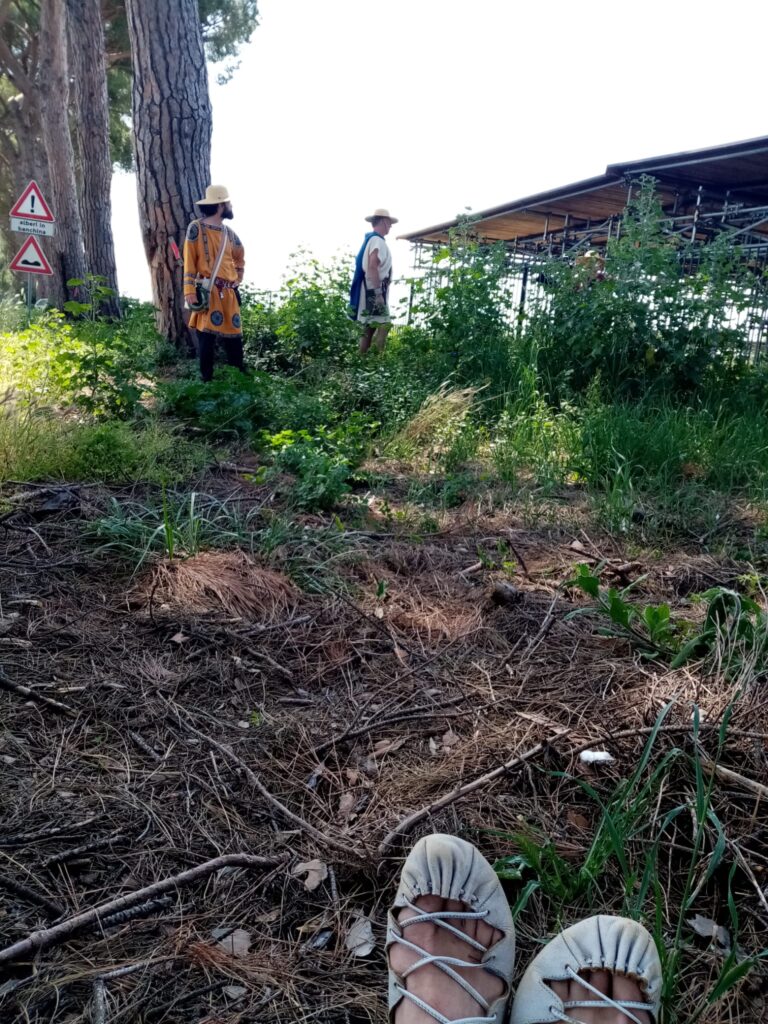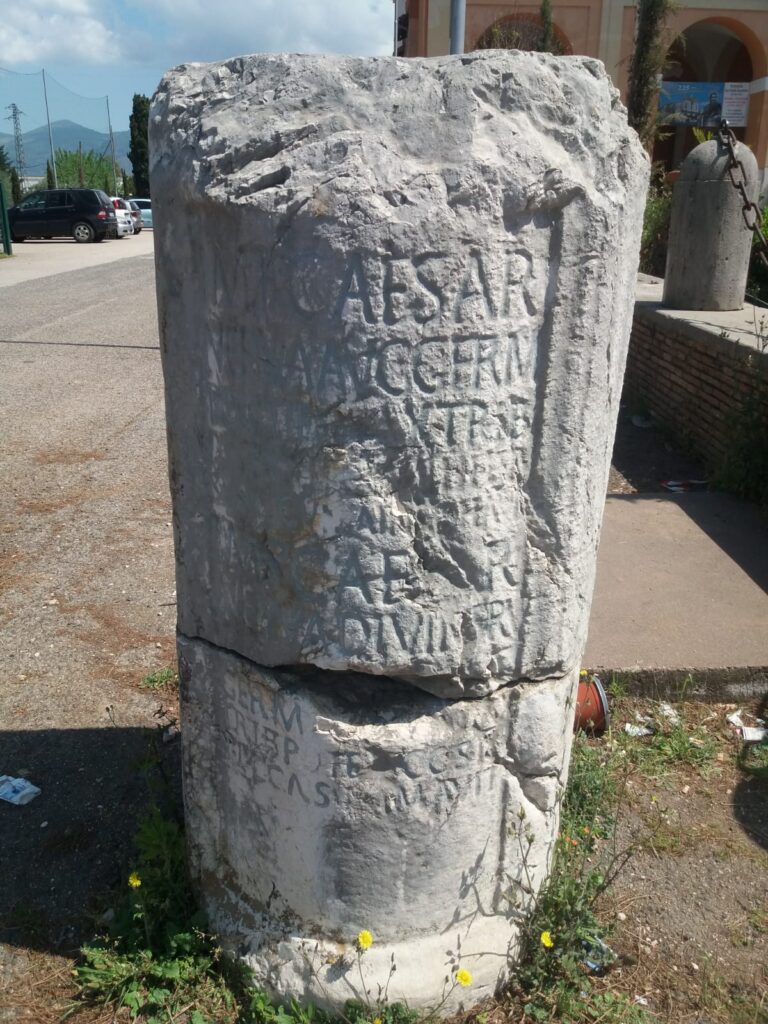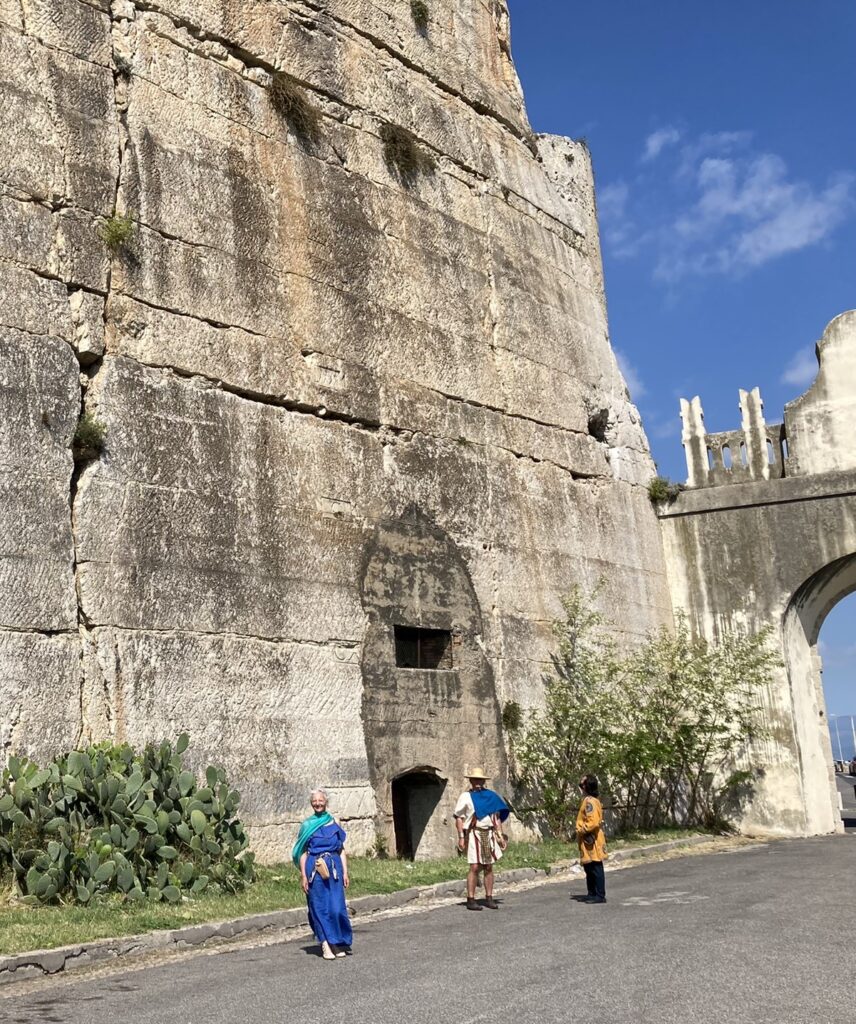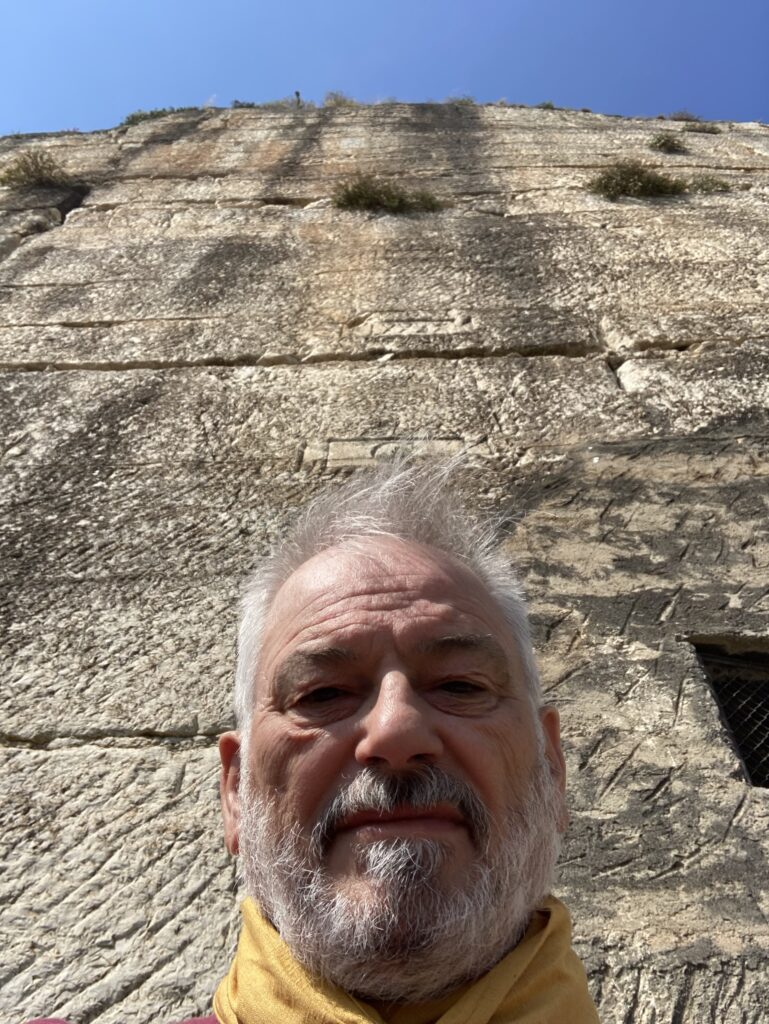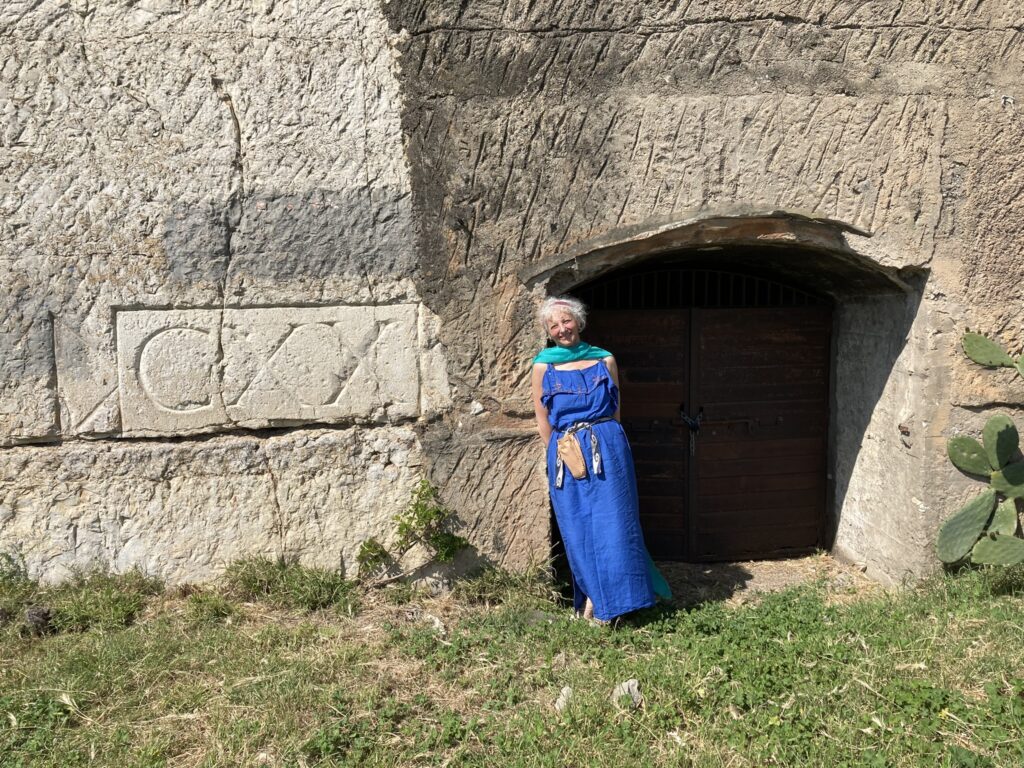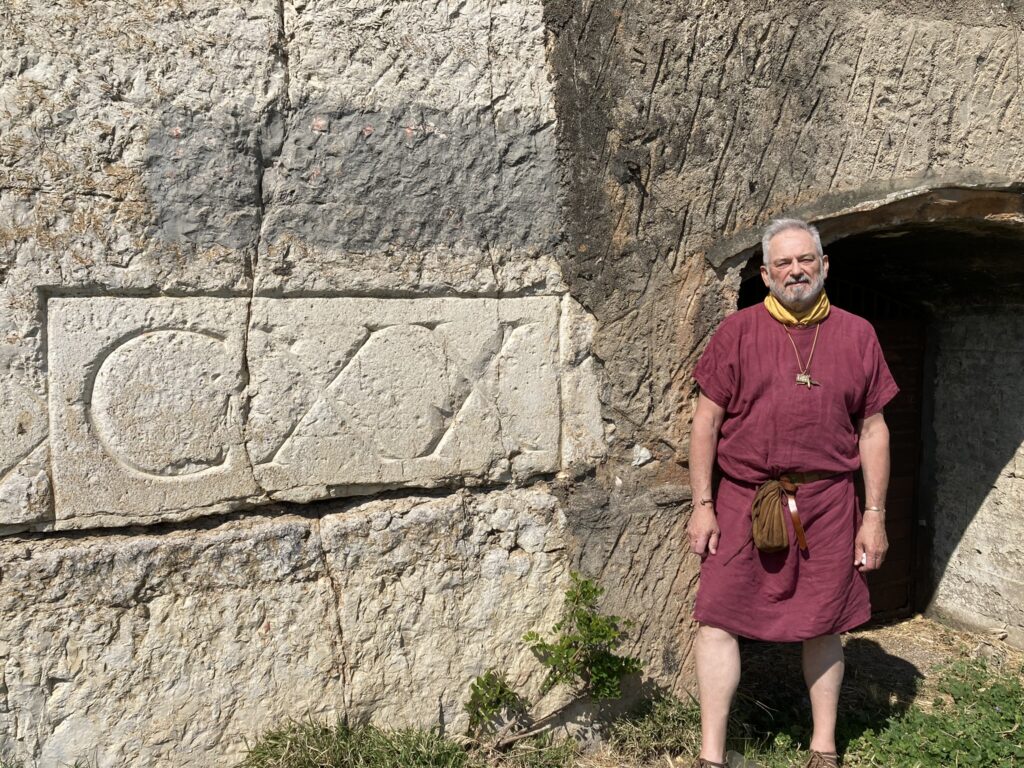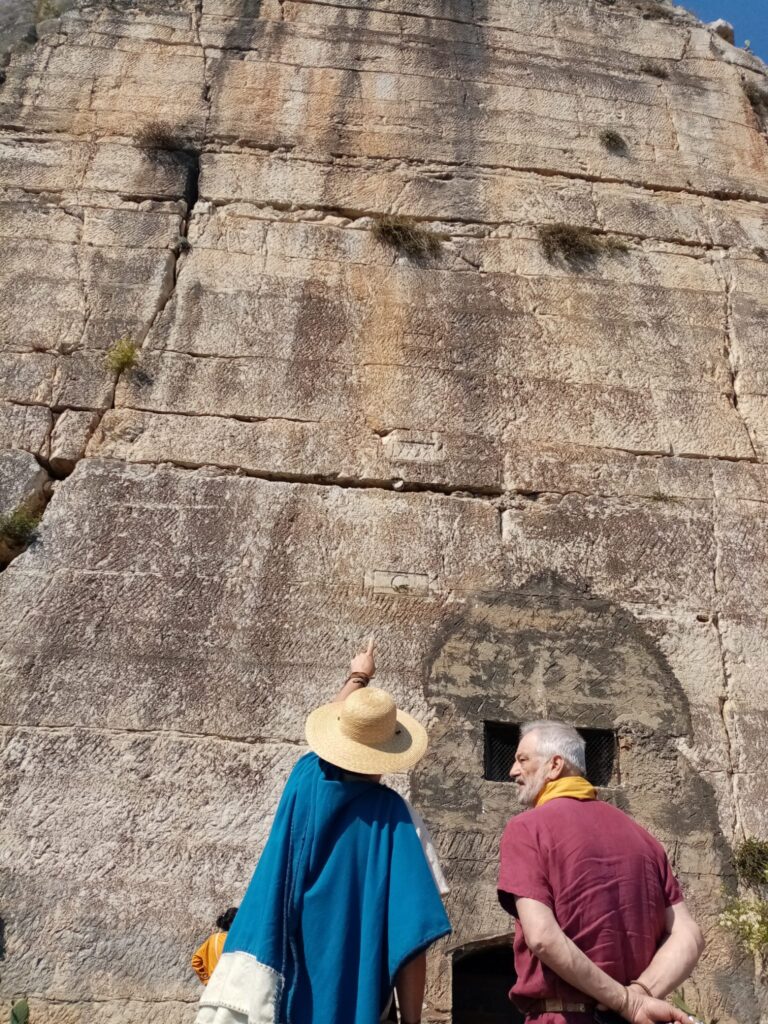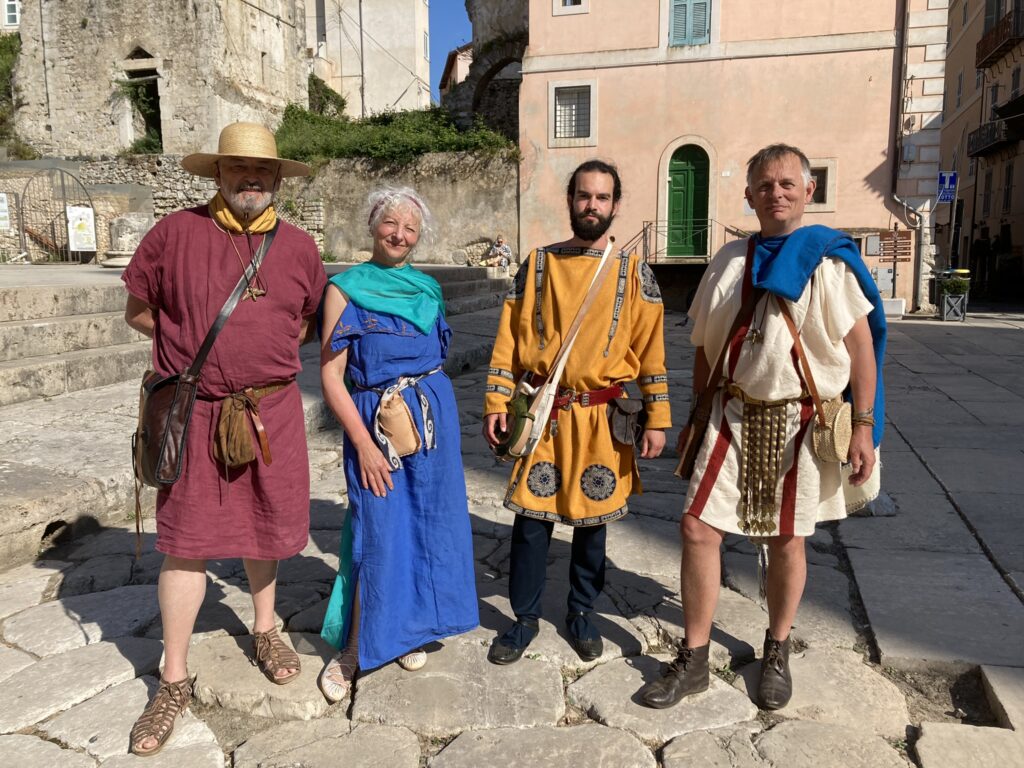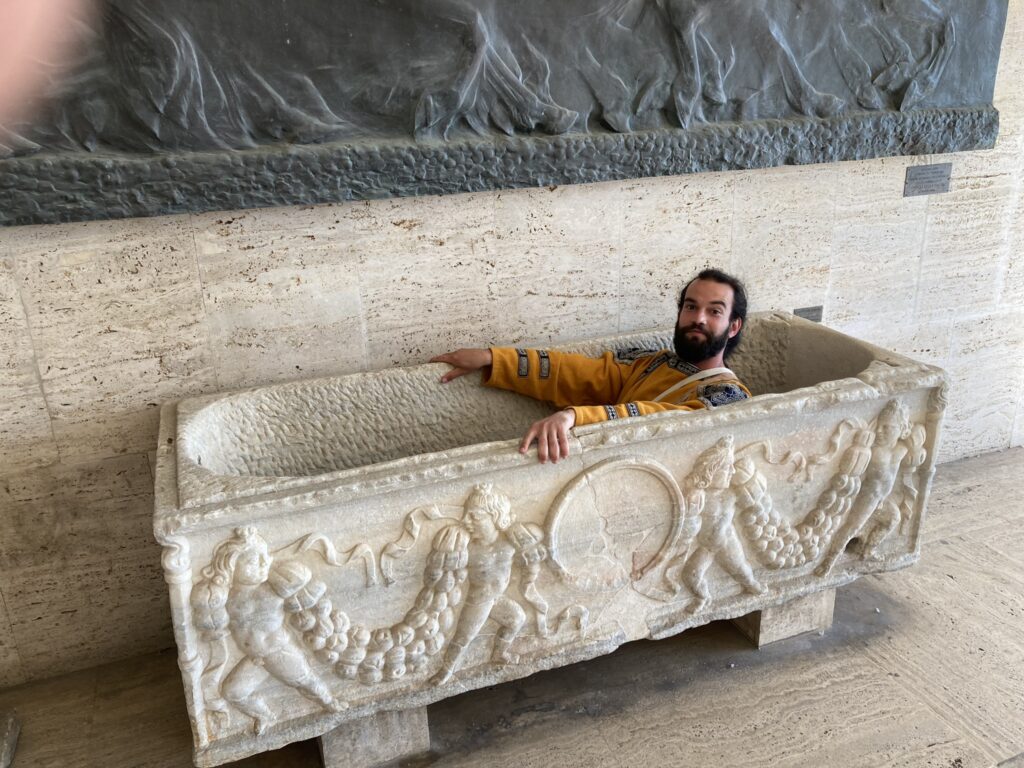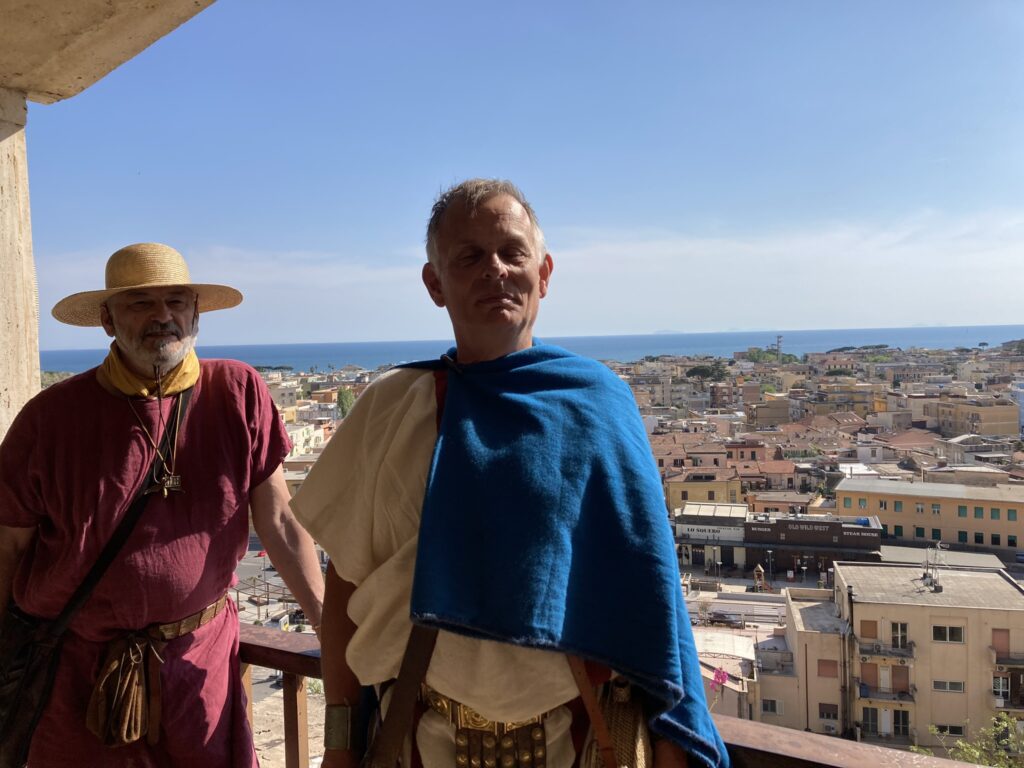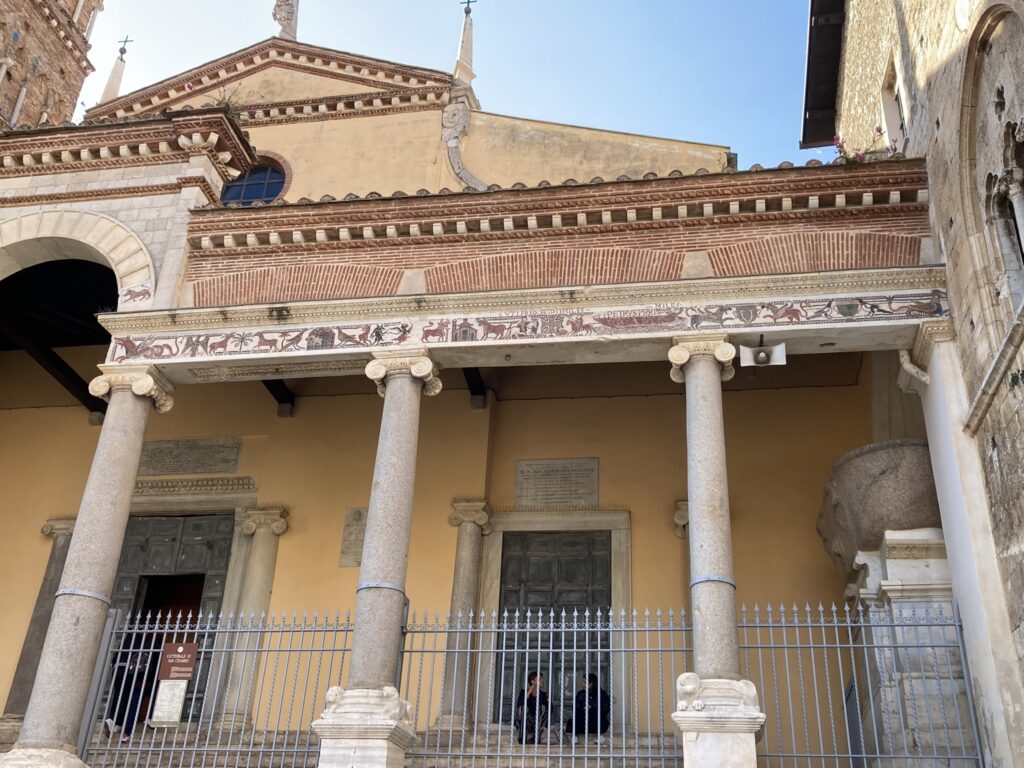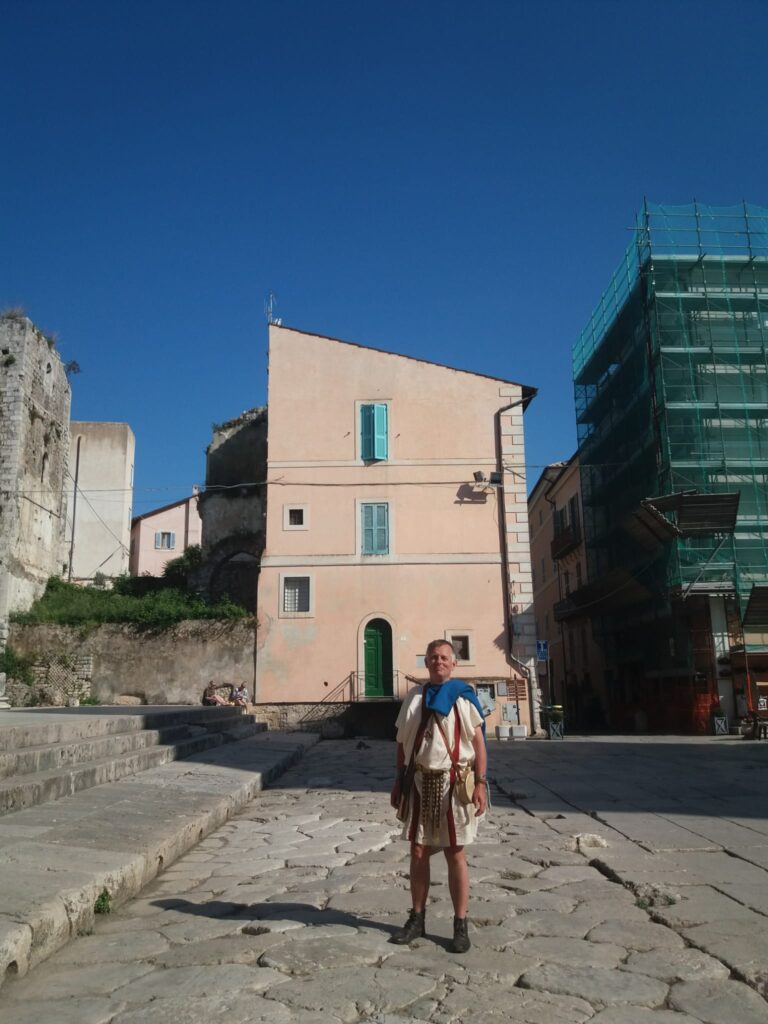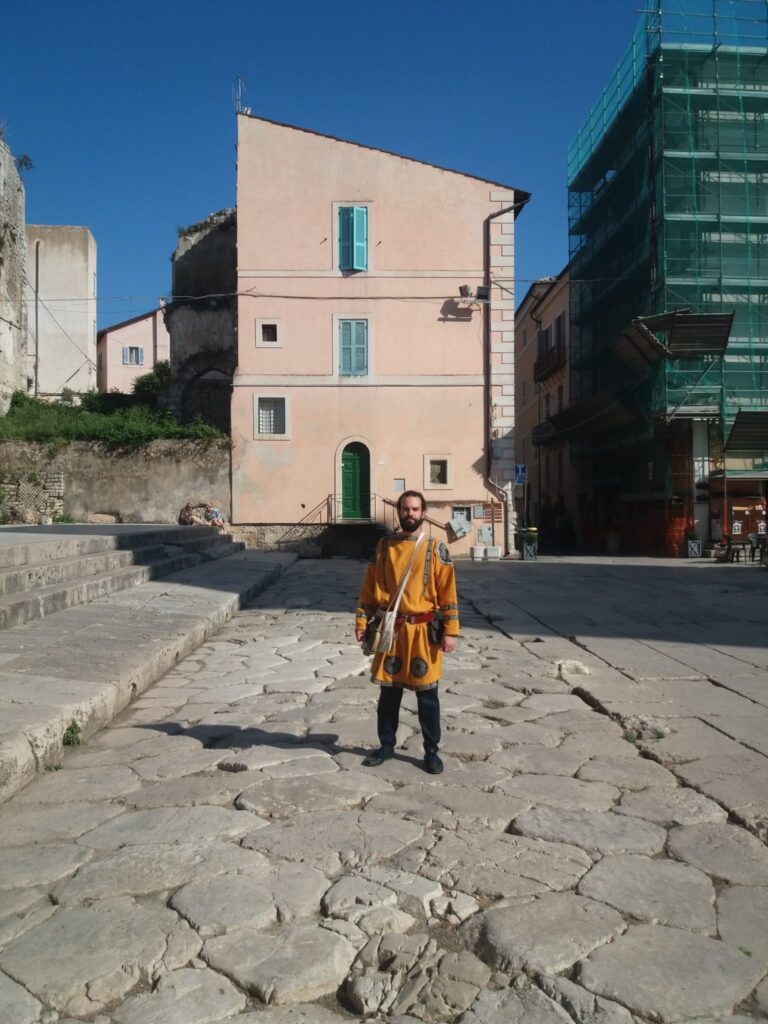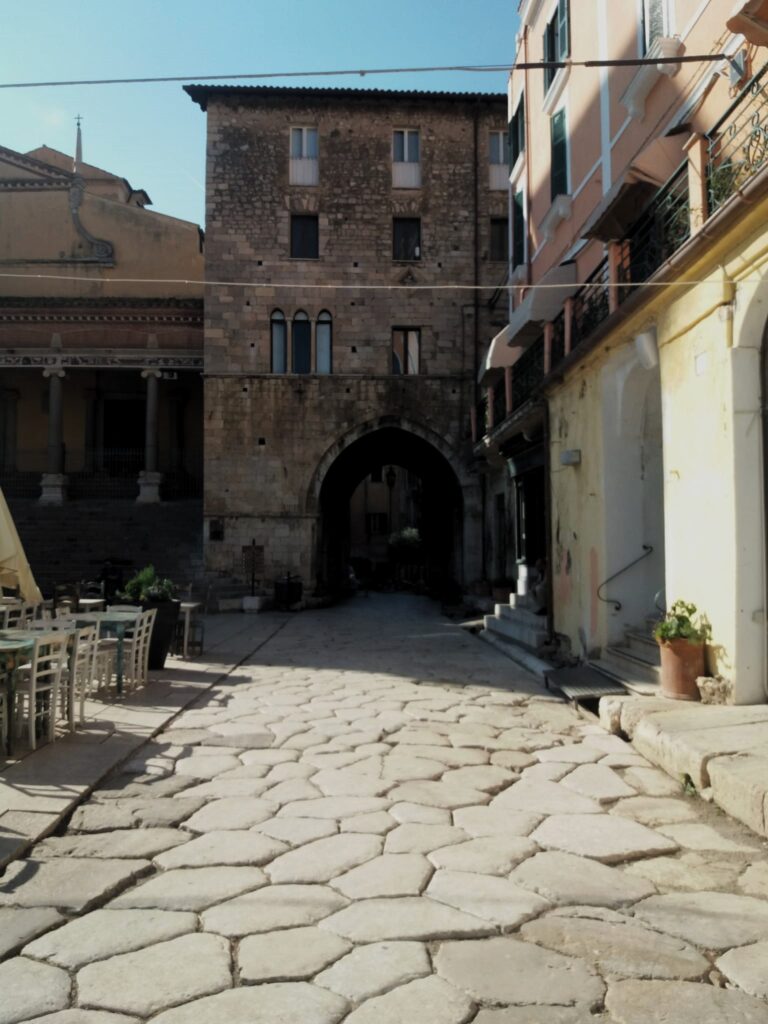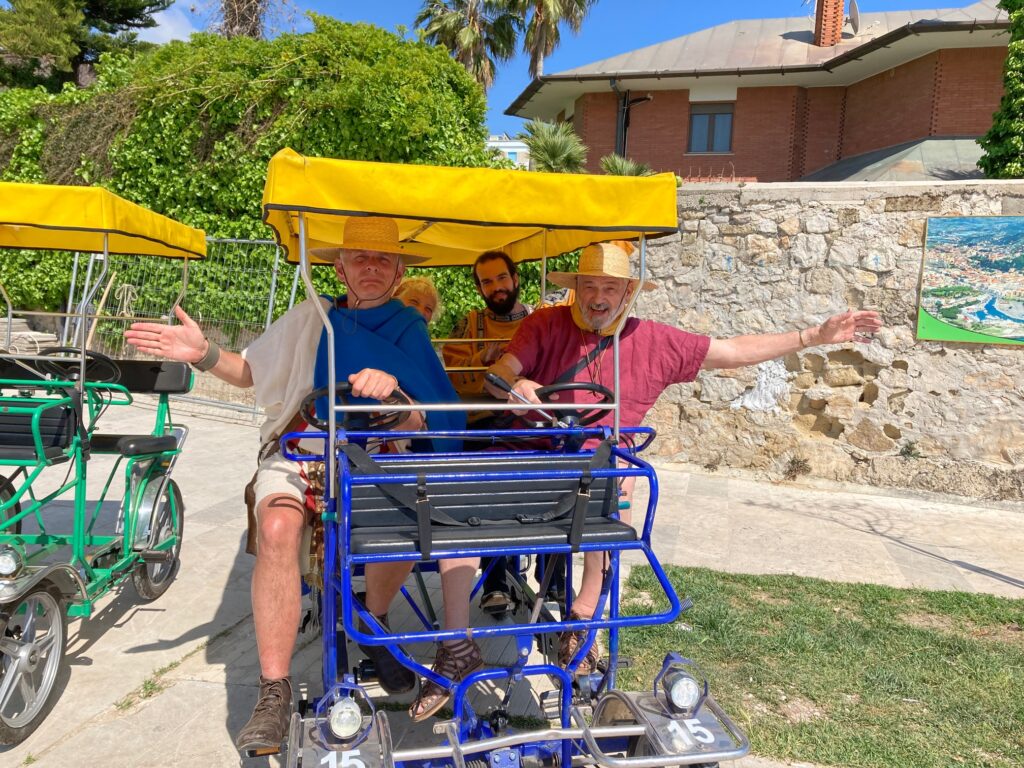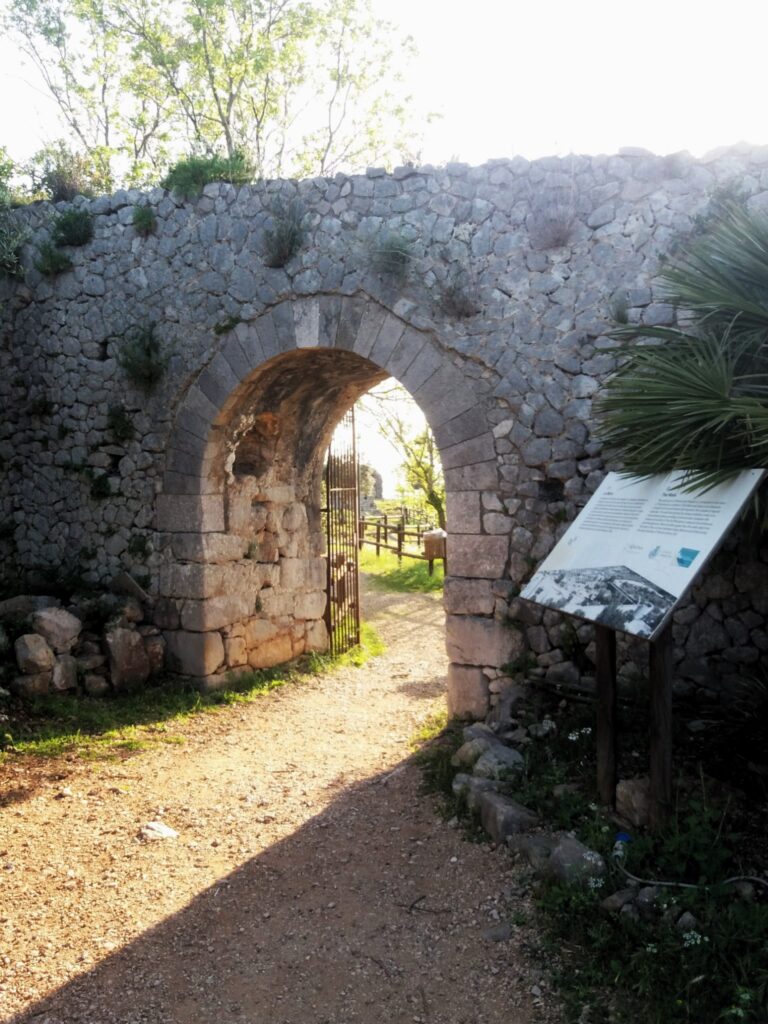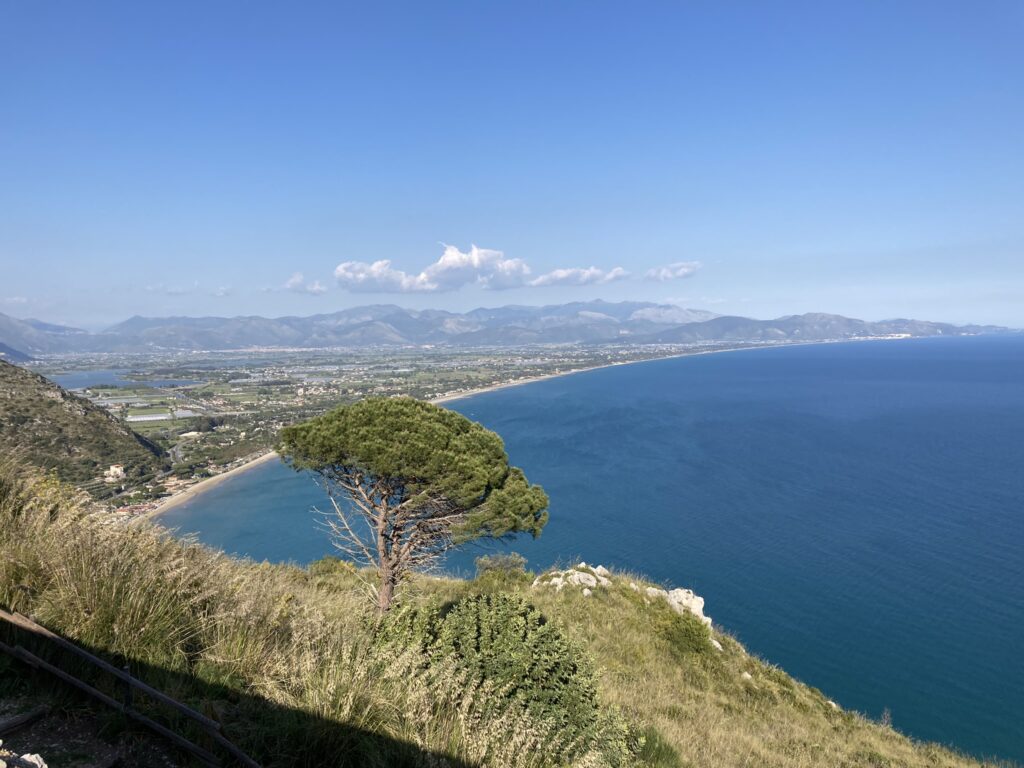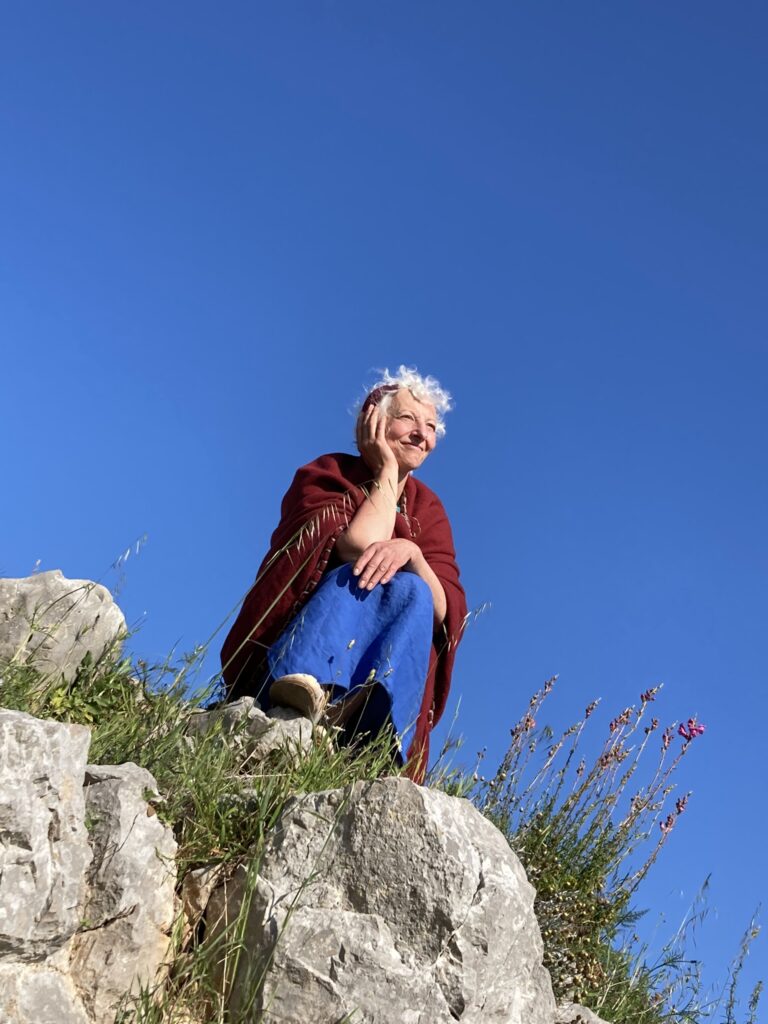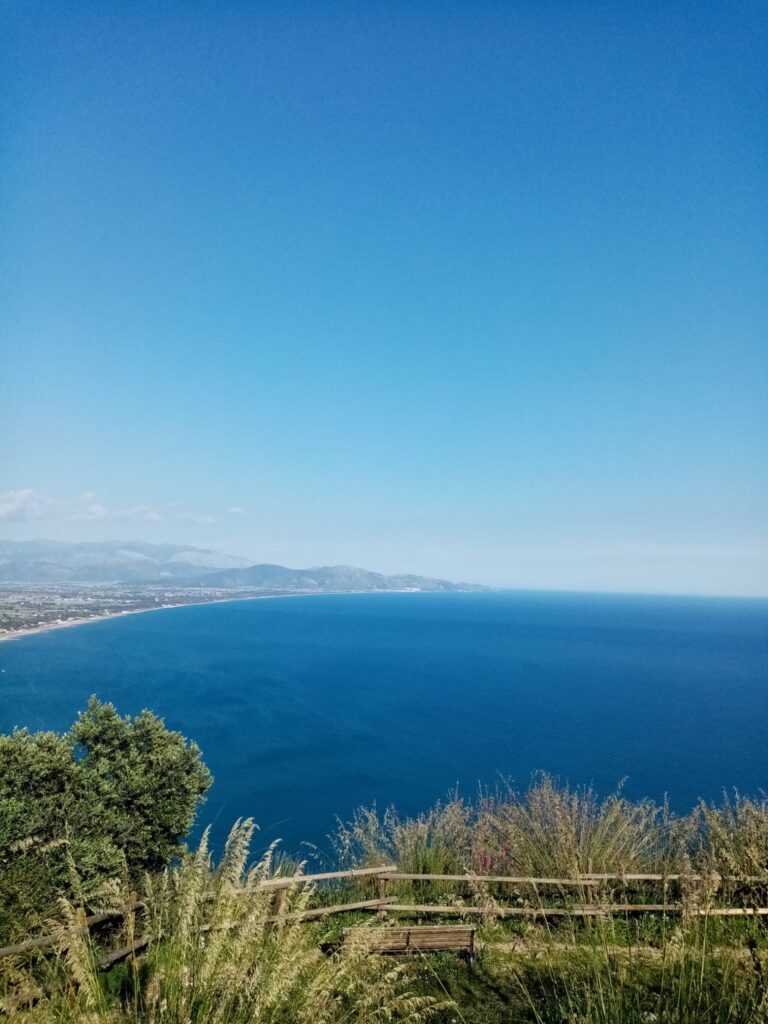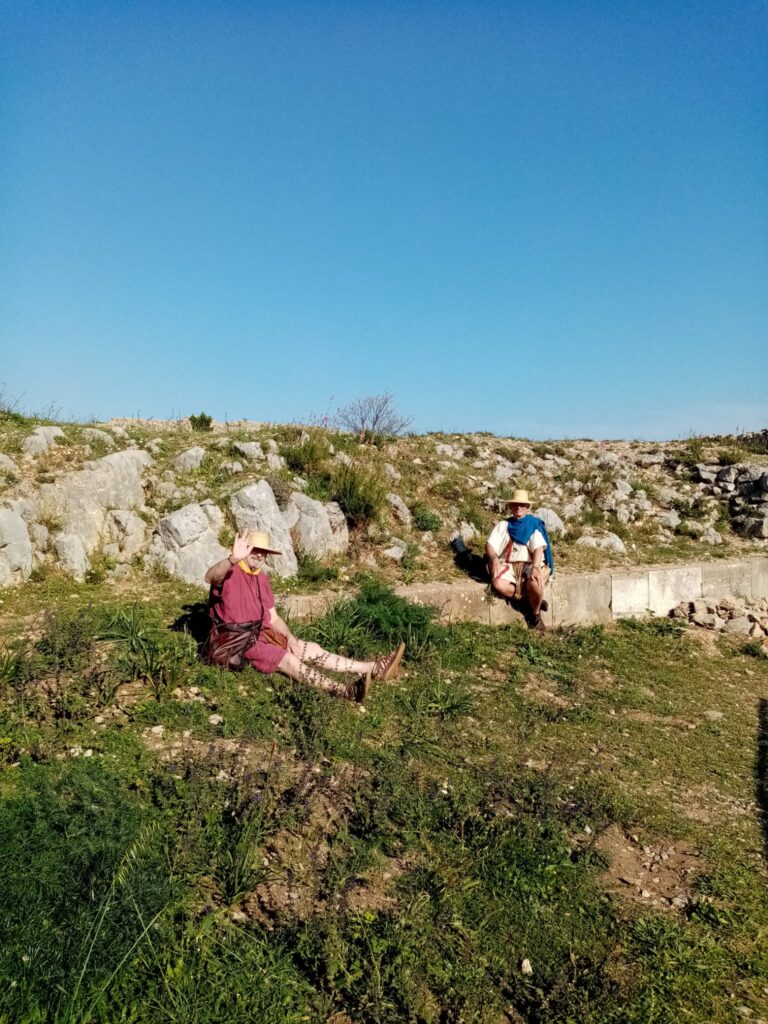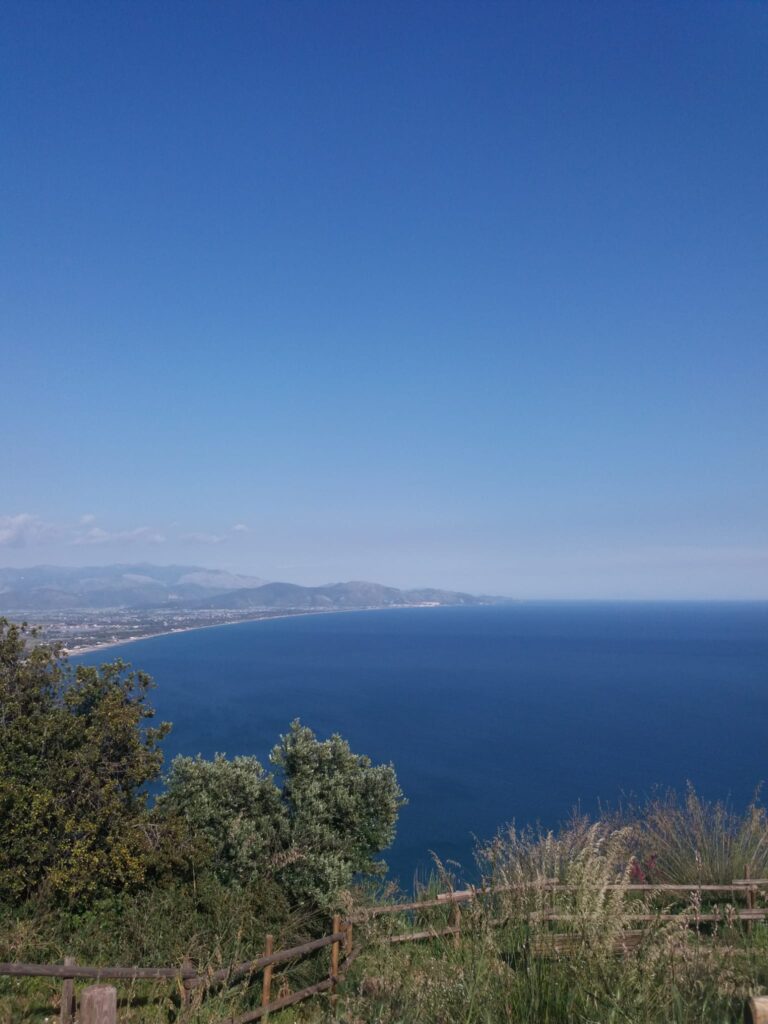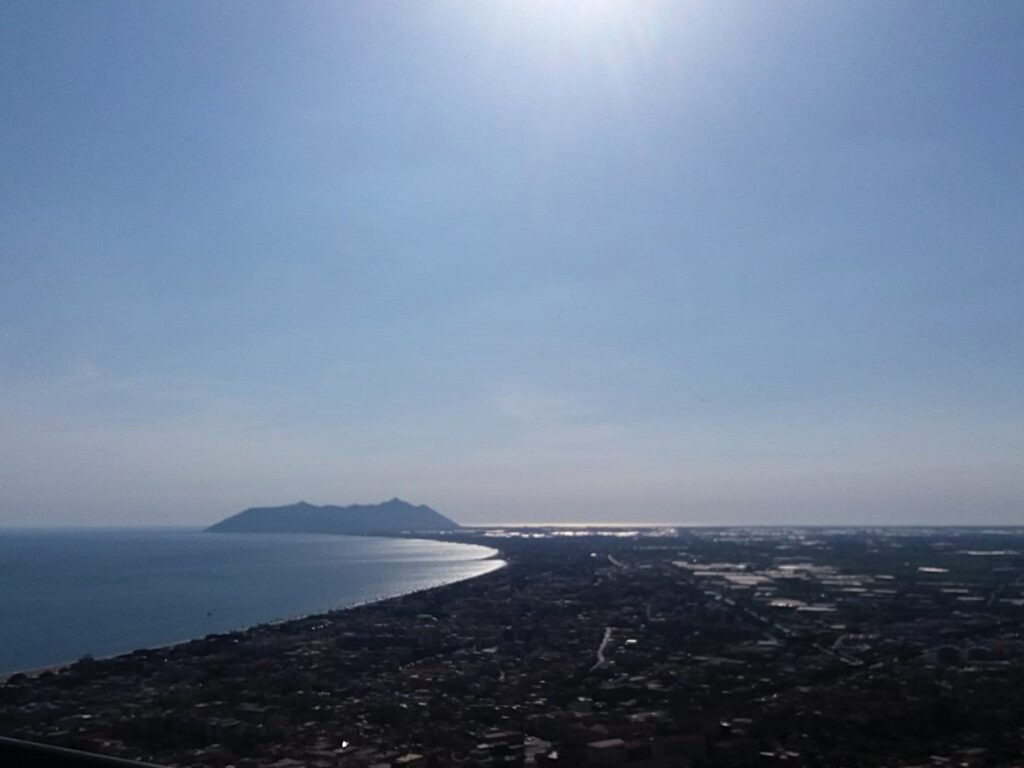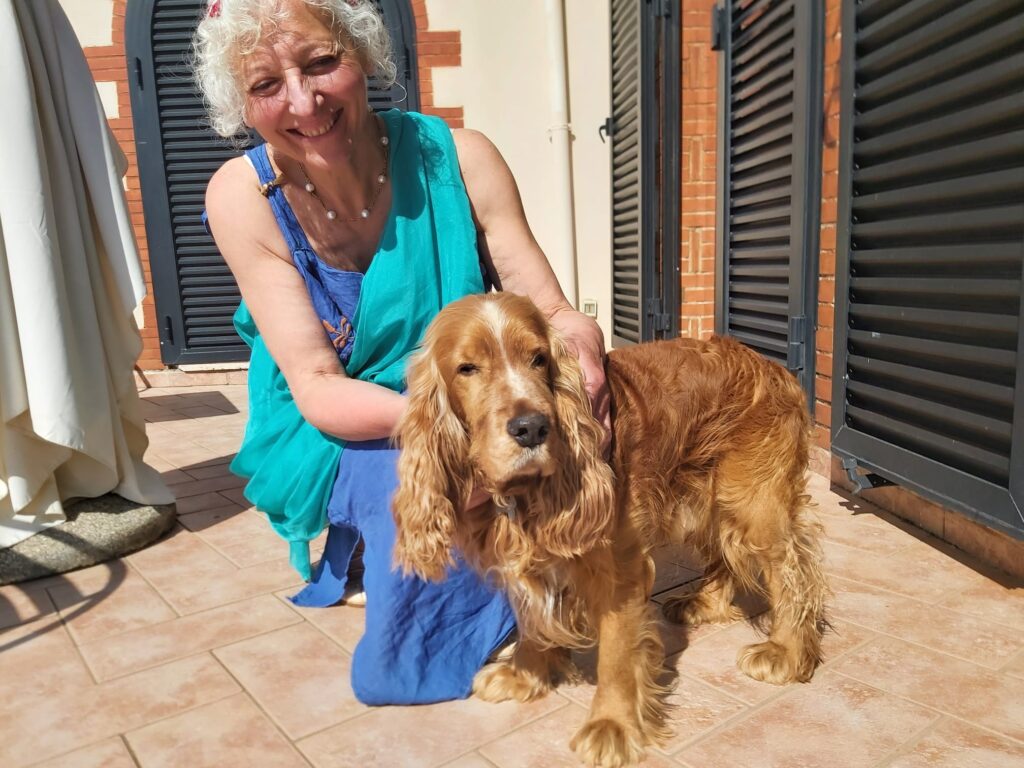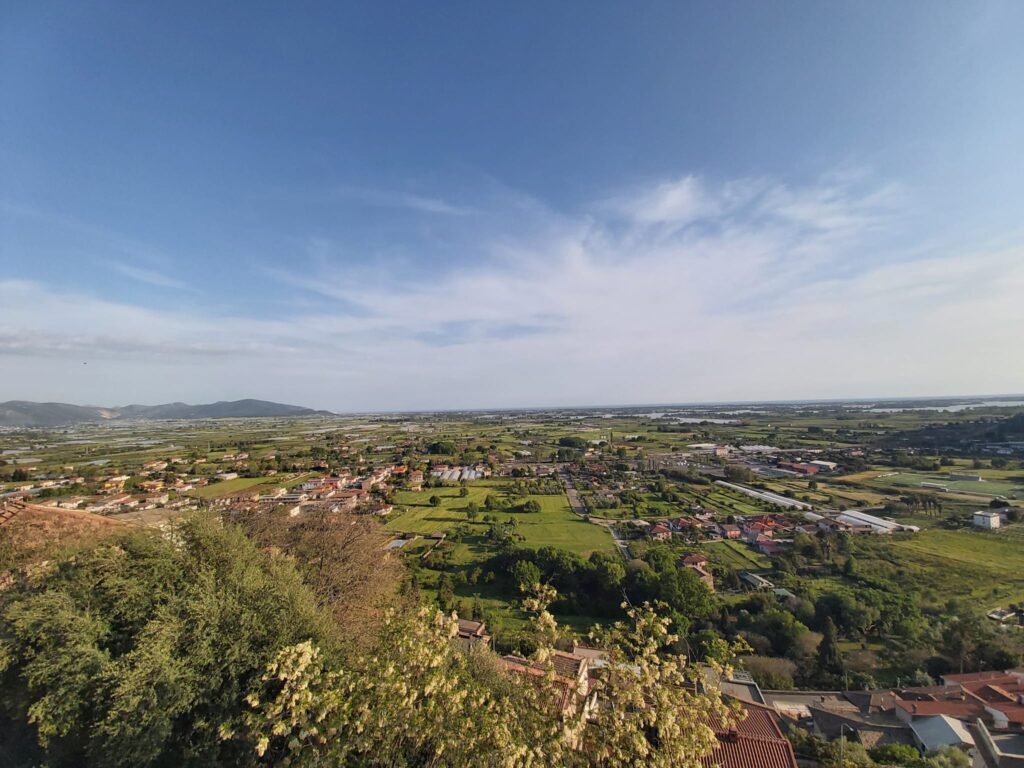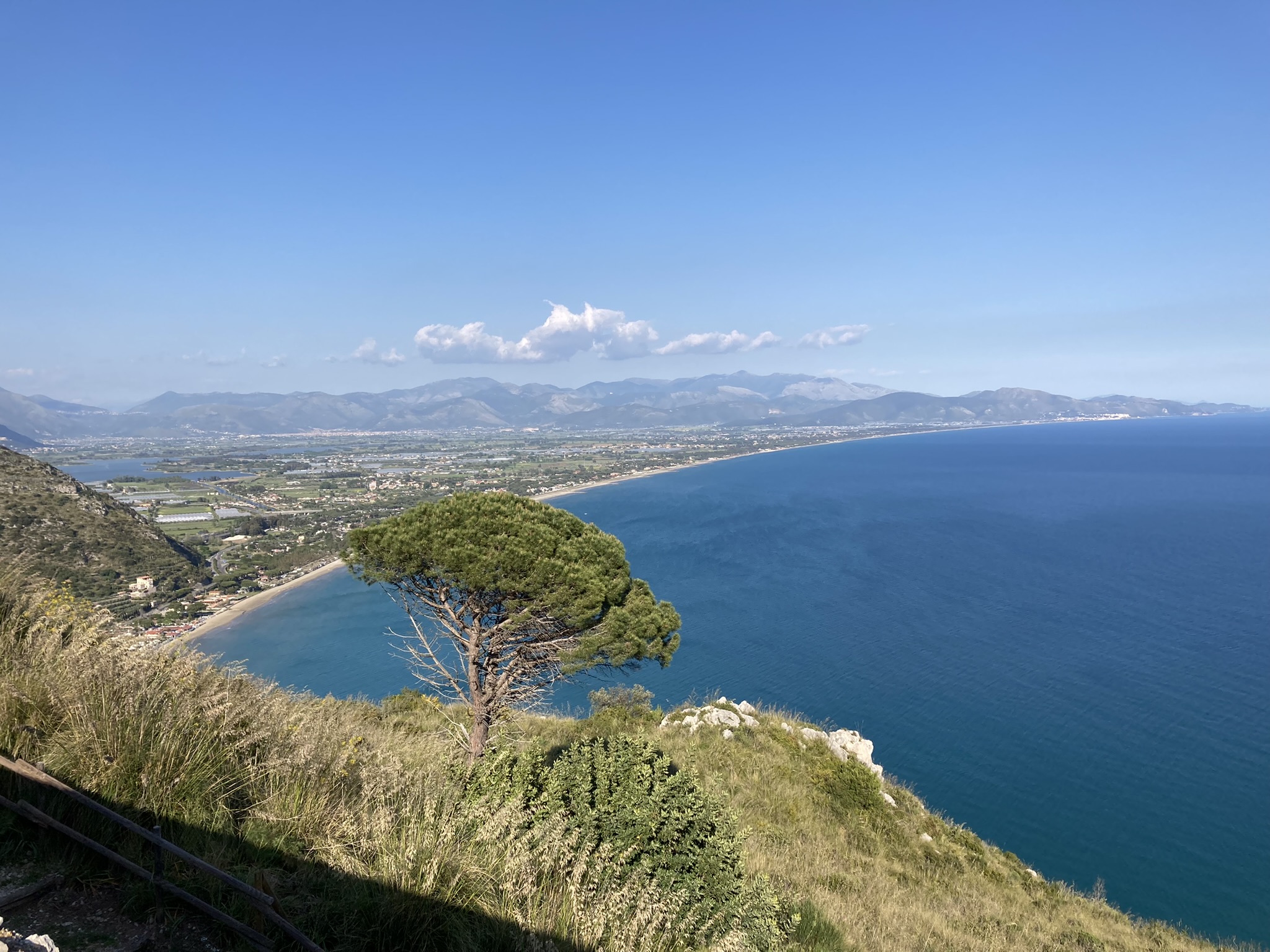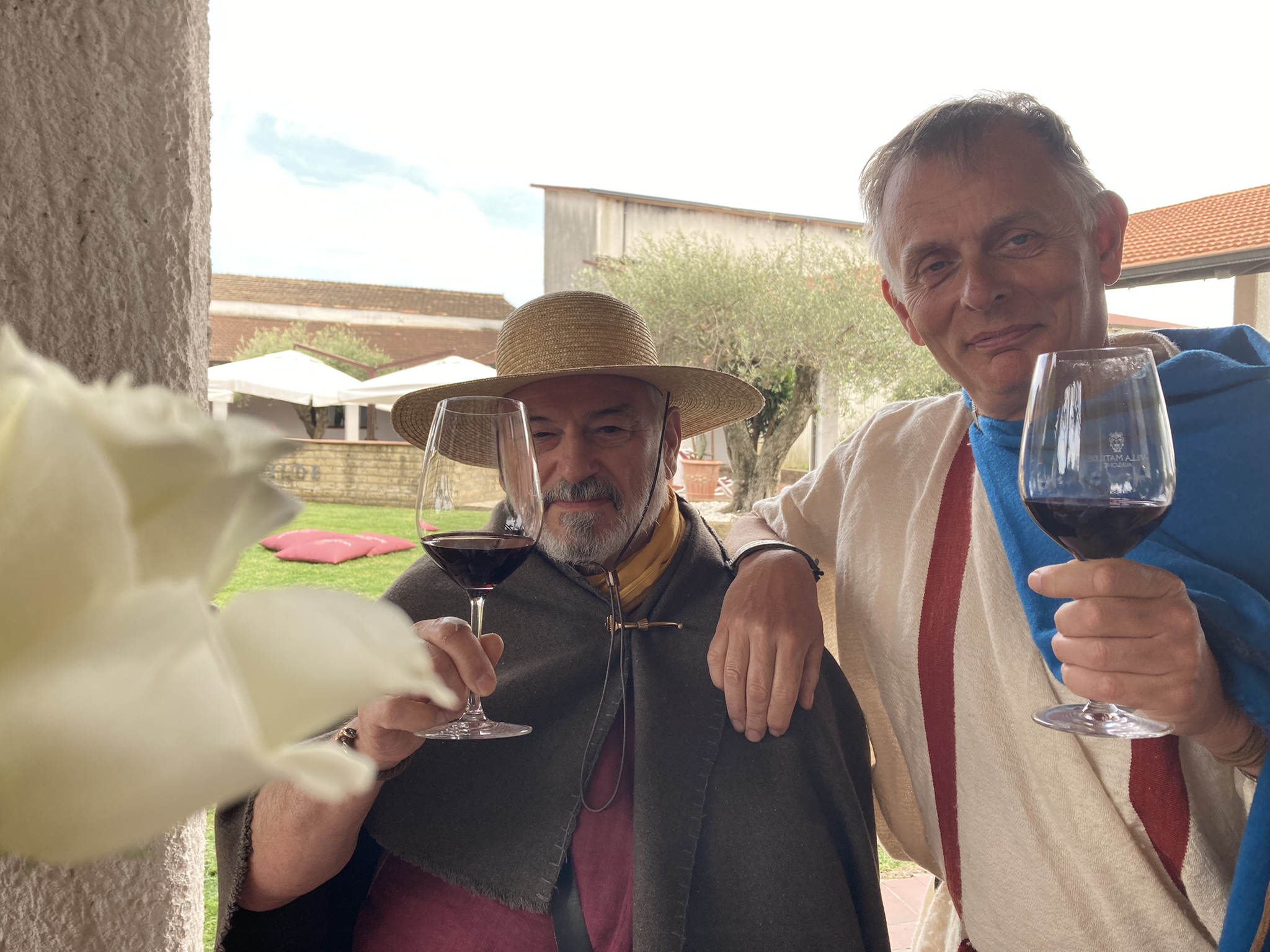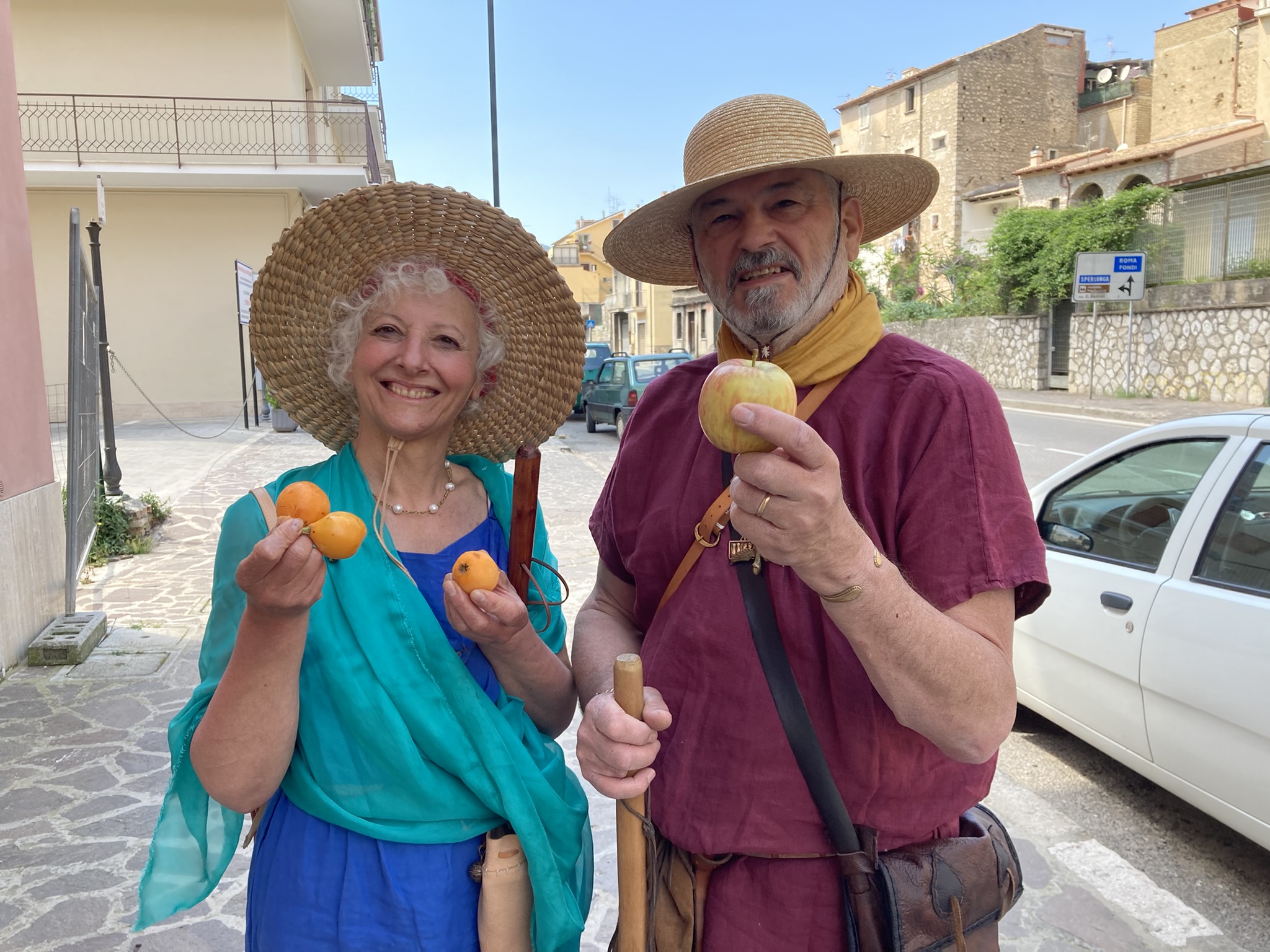Today we were finally together again and could in theory walk from Cisterna di Latina towards Terracina were it not that walking on this part of the Appia is almost equal to a suicide mission, we were therefore forced to use our Volkswagen to drive and visit and see some landmarks on the Appia and arrive before lunch time at Terracina.
Let me explain: This part of the Appia Antica is supposedly the longest straight road in Europe, roughly 44 km, and if we could lift the modern tarmac or asphalt we would probably find the road that was constructed by the Romans.
In the centuries that passed after the Roman empire collapsed the road was never widened and no sidewalks have been constructed. Now there is heavy traffic on this road that connects Fondi where the largest wholesale vegetable and fruit market of the south of Italy is located to Rome. Just impossible to have a nice and safe walk on this road.
Many things can be seen during this stretch, the most important is the mansion called “Tres Tabernae” a place where on the Appia in Roman times one could eat, sleep and horses could be changed.
Here, the Christian saint Paul of Tarsus, who was probably escorted by Roman military on his way to Rome where he would be put on trial and judged, was reportedly met by a group of Roman Christians (Acts 28:15).
The “Tres Tabernae was the first mansio or mutatio, that is, halting-place for relays, from Rome, or the last on the way to the city. At this point three roads run into the Via Appia, that from Tusculum, that from Alba Longa, and that from Antium; so necessarily here would be a halting-place.
By some the location is fixed some 3 miles S.E. of the modern village of Cisterna just before the Via Appia enters the Pontine Marshes, at a point where the modern road to Ninfa and Norba diverges to the north-east, where a few ruins still exist (Grotte di Nottola) at 33 miles from Rome. Others believe that it stood at Cisterna itself, where a branch road running from Antium by way of Satricum actually joins the Via Appia. However, excavations that took place at km 58.1 of the Via Appia between 1993 and 2001 revealed Roman baths and some other buildings.
Around the 3rd century AD, the area was invaded by marshes, and the inhabitants of the nearby Ulubrae likely moved to Tres Tabernae, which grew of importance and became a Christian episcopal see with a Palaeo-Christian cathedral dedicated to St. Paul. The barbaric invasions in Italy caused Tres Tabernae to decline until in 592, Pope Gregory I united its diocese to that of Velletri. Later in the high Middle Ages, Tres Tabernae was ravaged several times by the Saracens, until it was completely destroyed in 868. The position of the Tres Tabernae is also shown in the Tabula Peutingeriana in a location south of Rome.
When we arrived dressed in our Roman outfit and in our modern Volkswagen Caddy van we were greeted at Tres Tabernae by a closed gate that was going to stay closed. We started a chat with Mario who at the other side of the fence was restoring, together with two female assistants, a very nice black and white mosaic. He informed us that at present visitors were not allowed on the site and that he had no clue when this would be possible, the best view of the site was through the bars of the fence where Mario was working, please have a look at the video we made.
One of the difficulties working on the site, Mario told us, was theft, strangely not of archaeological artifacts but of the iron clamps that were part of the scaffolding construction that held up the roof that protects the mosaics. Stealing these clamps had become so frequent that they recently had decided to weld all the bolts of the clamps solid.
During our visit the archaeological responsible for the site visited and he immediately informed me that I could not take any pictures. I truthfully replied that I was not taking any pictures, but did not tell him that I was making a video.
Terracina
Why did the Romans chisel away more than 13 thousand cubic meters or 35 thousand metric Tons of rock from the side of mountain of Saint Angelo to create a vertical cut which is called the Pisco Montano?
Terracina as a colonia maritima frequently appears in history. The construction of the Via Appia in 312 BC added to its importance: the road at first crossed the hill at the back of the promontory by a steep ascent and descent. An attempt was made in 184 BC to get round it by an embankment thrown out into the sea: but it was probably not until early in Trajan’s time (98-117 AD) that a cut in the rocks at the foot of the promontory (Pisco Montano) finally solved the problem. The depth of the cut is indicated by marks on the vertical wall at intervals of 10 Roman feet; the lowest mark, about 1 m above the present road, is CXX, corresponding to 36 metres (128 feet).
It was probably in consequence of this road cut that some of the more important buildings of the imperial period were erected on the low ground near the small harbour. The construction of the coast road, the Via Severiana, from Ostia to Terracina, added to the importance of the place. The beauty of the promontory with its luxuriant flora and attractive view had caused it to be frequented by the Romans as early as 200 BC.
After visiting the cut mountain we had see-food lunch, we saw it and we ate it, and we visited the beautiful Roman Forum and Theatre in front of which the modern municipality is located. From the forum we drove up for a visit to the temple of Giove Anxur, once arrived at the parking and ticket office we were greeted by Mauro and Mauro who work for the Fondazione Città of Terracina. They asked why we were dressed up as time travellers. After we explained they were happy to give us free entrance to the site saving 28 euro.
In the evening, we stayed and had dinner at the fantastic B&B called “Cera una Volta” of the Signora Annalisa. She has a fantastic big house with many rooms overlooking Terracina. Superb hospitality, great stories about Terracina, very nice homemade Pomegranate liqueur and apricot pie!
